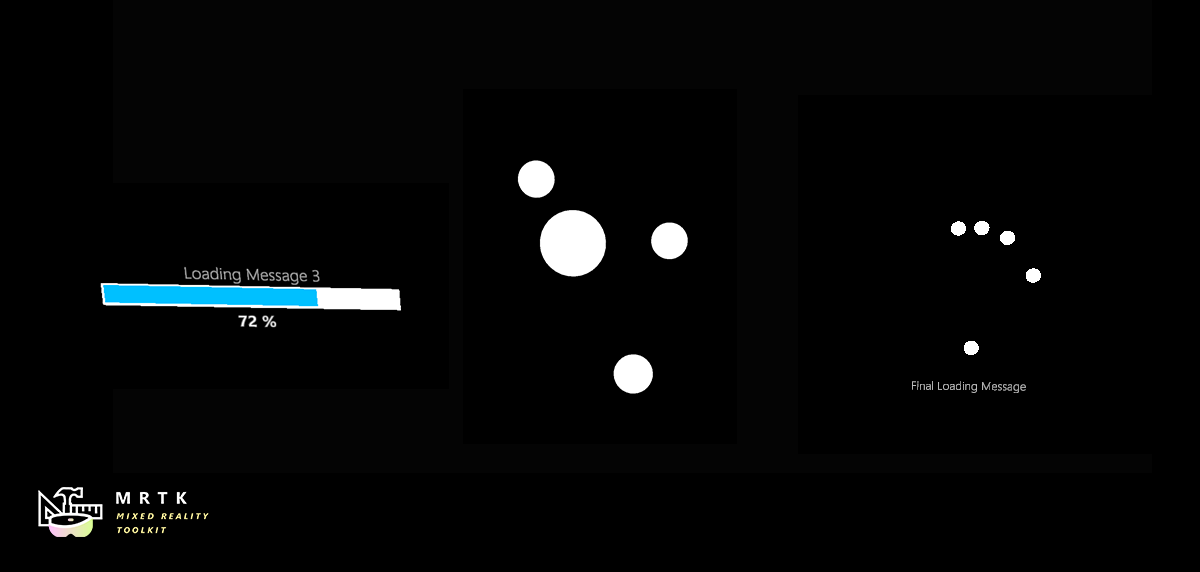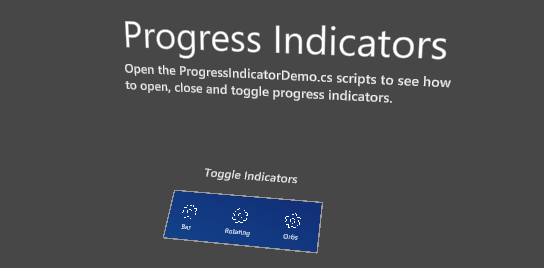Progress Indicators

Example scene
Examples of how to use progress indicators can be found in the ProgressIndicatorExamples scene. This scene demonstrates each of the progress indicator prefabs included in the SDK.

Example: Open, update & close a progress indicator
Progress indicators implement the IProgressIndicator interface. This interface can be retrieved from a GameObject using GetComponent.
[SerializedField]
private GameObject indicatorObject;
private IProgressIndicator indicator;
private void Start()
{
indicator = indicatorObject.GetComponent<IProgressIndicator>();
}
The IProgressIndicator.OpenAsync() and IProgressIndicator.CloseAsync() methods return Tasks. We recommend awaiting these Tasks in an async method.
Set the indicator's Progress property to a value from 0-1 to update its displayed progress. Set its Message property to update its displayed message. Different implementations may display this content in different ways.
private async void OpenProgressIndicator()
{
await indicator.OpenAsync();
float progress = 0;
while (progress < 1)
{
progress += Time.deltaTime;
indicator.Message = "Loading...";
indicator.Progress = progress;
await Task.Yield();
}
await indicator.CloseAsync();
}
Indicator states
An indicator's State property determines which operations are valid. Calling an invalid method will typically cause the indicator to report an error and take no action.
| State | Valid Operations |
|---|---|
ProgressIndicatorState.Opening |
AwaitTransitionAsync() |
ProgressIndicatorState.Open |
CloseAsync() |
ProgressIndicatorState.Closing |
AwaitTransitionAsync() |
ProgressIndicatorState.Closed |
OpenAsync() |
AwaitTransitionAsync() can be used to be sure an indicator is fully opened or closed before using it.
private async void ToggleIndicator(IProgressIndicator indicator)
{
await indicator.AwaitTransitionAsync();
switch (indicator.State)
{
case ProgressIndicatorState.Closed:
await indicator.OpenAsync();
break;
case ProgressIndicatorState.Open:
await indicator.CloseAsync();
break;
}
}